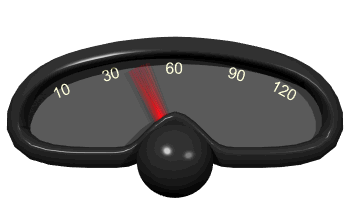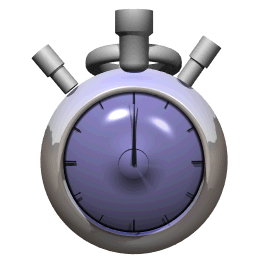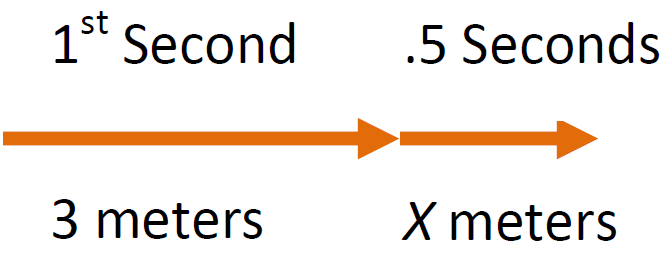![]()
![]()
|
Read What is Physics? |
Sheldon from the Big Bang explains physics
from Alom Shaha on Vimeo.
"The most incomprehensible thing about the
universe
is that
it is comprehensible."
- Einstein
Over Arching Concept
If a mass speeds up, slows
down or changes direction,
a net Force Must Be Present - Newton
Video Instruction
showmethephysics.com
|
Enduring Understandings 1. Speed is the distance traveled per unit time? 2. Speed is measured in meters/sec. 3. A meter is about a yard. 4. Average walking speed is 1 m/s.
|
Unit I - Mechanics - Study of the relationship between force and motion

I. Kinematics - Mathematical methods of describing and predicting motion
Describe motion by using:
A) Average Speed
Average Speed
of 120 miles per hour
can also be written ...
120 miles/hr
per = divided by
Could mean travelled
120 miles in one hour
OR ....
60 miles in ...
1/2 hour (30 minutes)
30 miles in ...
15 minutes
OR 15 miles
in 7.5 minutes

Can you believe the speed limit in
Calgary, Canada is 100!!

100 km/hr ≈ 60 mph
Avg. Speed - how much distance an object covers per unit time
1) Units: m/s, km/hour,
miles/hour
Average Speed = Δd/Δt


Distance
(meter ≈ 1 yard)
(km ≈ .6 miles)

Time
- secs, minutes, hours
|
Ex 1) An object travels 5.0 meters in 2.0 seconds.
Find its speed. |
Speed = Δd/Δt
= 5.0 m/2.0 sec
= 2.5 m/s
|
Ex 2) An object moves at a rate of 3.0 m/s for 1.5 seconds.
How far did the object move? |
Speed =Δd/Δt
3.0 m/s = Δd/1.5 sec
Δd = 4.5 m
Motion Map
3.0 m/s for 1.5 seconds


Δd = 4.5 m

Photos made by
Eadweard Muybridge (1830- 1904)
Animation by User
Waugsberg
Public Domain
|
Ex 3) An object moves at rate of 4.0 m/s over a distance of 10. meters.
How long did it take to travel that distance? t = ? |
Speed = d/t
4.0 m/s = 10. m/t
(Cross Multiply)
(4.0 m/s)t = 10. m
(Divide by 4)
t = 2.5 seconds
Motion Map
How much time to travel 10 m @ 4 m/s?

t = 2.5 seconds
![]()
![]()
© Tony Mangiacapre.,
All Rights Reserved [Home]
Established 1995
Use any material on this site (w/ attribution)

